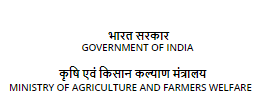IPM tools and techniques know how 1 A field kit for the multiplication of eggs and insect larval parasitoids 2 Preparation of Corcyra rearing cages and related accessories for lab
Background:
The mass rearing of insects has become essential for implementing eco-friendly bio-intensive pest management strategy. To implement IPM strategy, the bio-control agents (parasitoids, predators and bio-pesticides) are required in large quantities. Rice meal moth, Corcyra cephalonica (Stainton) (Lepidoptera:Pyralidae) a store grain pest is an important laboratory host for rearing a variety of bio-control agents. The important among them are egg parasitoids- Trichogramma spp.; egg-larval parasitoid- Chelonus blackburni; larval parasitoids- Bracon spp., Goniozus nephantidis, Apanteles spp.; insect predators Chrysoperla carnea, Mallada boniensis and Cyrtorhynus lividipennis. Besides these, entomo-pathogenic nematodes such as Steinernema feltiae (Neoaplectana carpocapsea) are also multiplied upon this host insect. Mass production of this insect is a pre-requisite for the mass production of these bio-control agents. The bio-control agents’ use, however, has remained low due to a number of technological, socio-economic and institutional constraints:
Technology details:
? A field kit for the multiplication of eggs and insect larval parasitoids – a technique to conserve the eggs and insect larval parasitoids in situ by the specialized provision made in the kit facilitates the work:
? Preparation of Corcyra rearing cages and related accessories for lab. – Fool-prrof rearing of Rice meal moth, Corcyra cephalonica (Stainton) (Lepidoptera:Pyralidae) a store grain pest is an important laboratory host for rearing a variety of bio-control agents.


